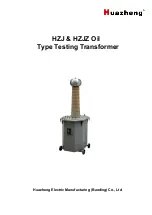
Product Overview and Specifications
12
Hardware Reference Manual – DXLink™ Twisted Pair 4K Transmitters/Receivers
Receiver Rear View
The following components are located on the rear of Receivers (left to right):
Power Jack
– The power receptacle is a 2.1 mm DC jack for connecting power. Power can come from a locally connected DC
supply of 12 V. An automatically adjusting universal 110/220 IEC power supply is provided. The power supply is ENERGY
STAR
®
qualified to ensure maximum efficiency and savings.
IMPORTANT:
If desktop power is used to power the Receiver, only the provided desktop power supply should be used and it
must not be altered in any way. Remote power can also be provided via a switcher, PDXL-2 (FG1090-170), or PS-POE-AT-TC
(FG423-84).
NOTE:
DXLink Receivers can also be powered through the DXLink connector when attached to a DXLink Output Board in an
Enova DGX Switcher. We recommend calculating the power budget for the switcher to maintain the redundancy of its power
supplies (see page 23).
Ground Screw
– The ground screw is for creating a technical ground for the ungrounded sources/destinations with respect
to the DXLink Transmitters/Receivers and switcher (see page 28).
DXLink Input Connector
– DXLink (RJ-45) connectors transport digital video, embedded audio, Ethernet, and bidirectional
control over twisted pair cable to DXLink devices or boards, including digitally transcoded analog video signals. The DXLink
path supports HDCP and also supports power over the same path from an Enova DGX Switcher or Solecis 5x1 4K Digital
Switcher to power the module. For pinout and LED information, see page 28.
ICS LAN 10/100 Connecto
r – The ICS LAN 10/100 (RJ-45) connector is for Ethernet 10/100 connectivity (e.g., receiving
SEND_COMMAND commands and downloading firmware update files). For pinout and LED information, see page 28.
RS-232 Port
– The RS-232 (serial data interface) port is a 3-position screw block which accepts data from the source
device and transfers it via the twisted pair cable to the Receiver, which in turn transfers the data to the destination device or
the transfer of data can also be made from the destination to the source. In addition to being directly connected to a device,
this port can be connected as an independent native NetLinx control port from a networked NetLinx Central Controller.
IR RX Port
– The IR RX port is used for IR control. This port is a 3.5 mm stereo jack.
IR TX Port
– The IR TX port is used for IR control. This port is a 2-pin mini-Phoenix connector. In addition to being directly
connected to a device, this port can be connected as an independent native NetLinx control port from a networked NetLinx
Central Controller.
USB Port
– The USB-A port on a DXLink Receiver module supports keyboard/mouse. This port is used in conjunction with
the USB-B Host port on a DXLink Transmitter module which supports a USB device and connects to the PC. (For USB port
information, see page 13.)
HDMI Out Connector
– The HDMI Out connector is for digital video and embedded audio. The HDMI connector has a center
screw for locking capability. The HDMI connector also supports a DVI-D signal (a DVI-to-HDMI cable adapter is required).
Stereo Audio Out Connector
– The Stereo Audio Out connector is a 3.5 mm stereo jack. In order for audio to be sent out of
the analog stereo audio connector on the DX-RX-4K, the audio must have originated or be embedded in the HDMI signal on
the attached Switcher or Transmitter as a 2 channel signal (either analog stereo or 2 channel L-PCM); Multi-channel
(>2 channel) L-PCM formats will pass incomplete audio (only 2 of the multiple channels will be sent). All other audio
formats will be muted at the connector.
FIG. 4
DXLink Receiver rear view (DX-RX-4K shown)
IR ports
Stereo Audio Out connector
USB port
ICS LAN 10/100
Power jack
DXLink input connector
Ground screw
RS-232 port
HDMI Out connector













































